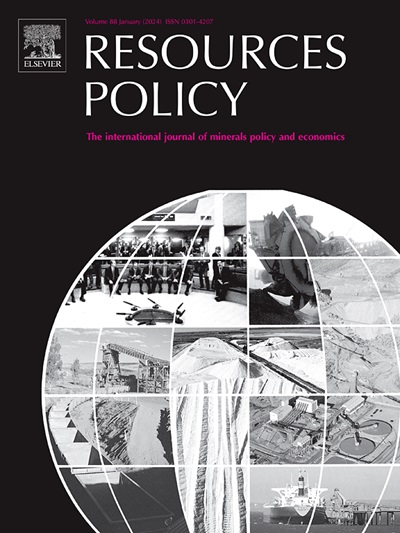核能生产对关键矿物有多敏感?
IF 10.2
2区 经济学
0 ENVIRONMENTAL STUDIES
引用次数: 0
摘要
核能生产的优势在于对天气条件的依赖较少,但它依赖于关键的矿物。本研究通过构建一个包含38个国家(占全球核能产量的94%)的模型来检验这种依赖性。分析期间为2000年11月至2023年12月,采用GVAR模型和格兰杰因果关系。结果表明,铀、镍和铜价格上涨对国际核能生产产生了负面影响,说明了溢出效应。方差分解揭示了石油和股票市场对核能的影响,其中石油市场在美国和欧洲的作用尤为显著。一系列稳稳性测试通过以下方式证实了这些发现:i)排除COVID-19期间,ii)将油价波动纳入模型,iii)将数据频率从每月更改为每年,iv)使用替代核能代理,以及v)采用时变双边贸易。调查结果支持鼓励自由国际贸易和贸易协定的政策,以加强关键矿物的生产和交换。本文章由计算机程序翻译,如有差异,请以英文原文为准。
How sensitive is nuclear production to critical minerals?
Nuclear energy production has the advantage of being less dependent on weather conditions, but it relies on critical minerals. This study examines this dependency by constructing a model with 38 countries, representing 94 % of global nuclear production. The analysis employs the GVAR model and Granger Causality from November 2000 to December 2023. The results show that higher uranium, nickel, and copper prices negatively impact international nuclear energy production, illustrating spillover effects. Variance decomposition reveals the influence of oil and stock markets on nuclear energy, with oil markets playing a particularly significant role in the U.S. and Europe. A series of robustness tests confirmed these findings by: i) excluding the COVID-19 period, ii) incorporating oil price volatility into the model, iii) changing the data frequency from monthly to annual, iv) using an alternative proxy for nuclear energy, and v) applying time-varying bilateral trade. The findings support policies that encourage free international trade and trade agreements to enhance the production and exchange of critical minerals.
求助全文
通过发布文献求助,成功后即可免费获取论文全文。
去求助
来源期刊

Resources Policy
ENVIRONMENTAL STUDIES-
CiteScore
13.40
自引率
23.50%
发文量
602
审稿时长
69 days
期刊介绍:
Resources Policy is an international journal focused on the economics and policy aspects of mineral and fossil fuel extraction, production, and utilization. It targets individuals in academia, government, and industry. The journal seeks original research submissions analyzing public policy, economics, social science, geography, and finance in the fields of mining, non-fuel minerals, energy minerals, fossil fuels, and metals. Mineral economics topics covered include mineral market analysis, price analysis, project evaluation, mining and sustainable development, mineral resource rents, resource curse, mineral wealth and corruption, mineral taxation and regulation, strategic minerals and their supply, and the impact of mineral development on local communities and indigenous populations. The journal specifically excludes papers with agriculture, forestry, or fisheries as their primary focus.
 求助内容:
求助内容: 应助结果提醒方式:
应助结果提醒方式:


